Sorry for the delay with writing the part 2 of the thread…..
The x8 power socket looks something like this:-
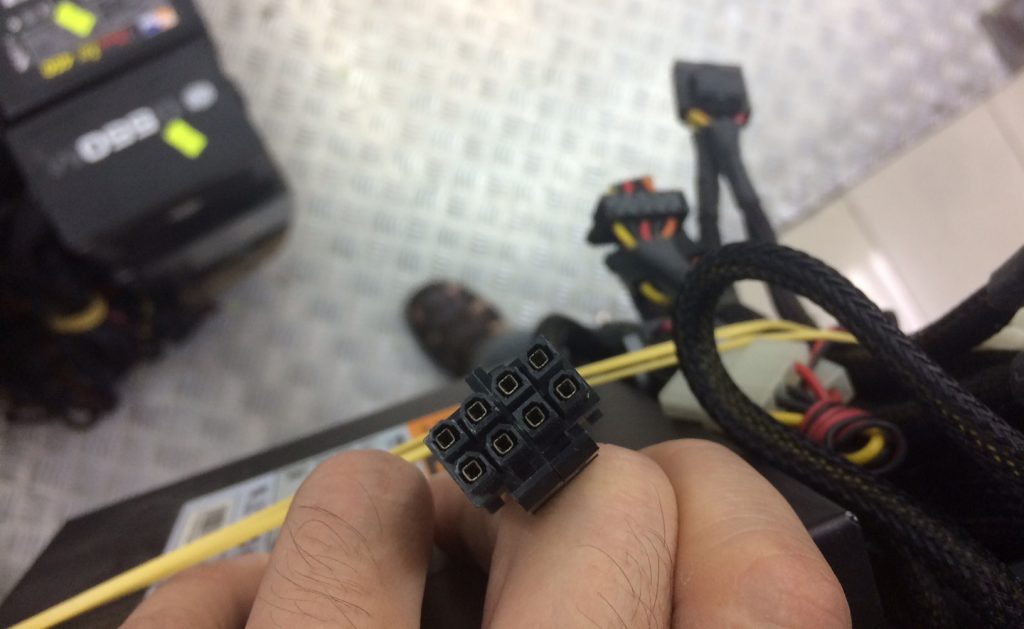
Generally speaking, the higher the wattage of the power supply (PSU) then the more number of x8 sockets you will get… So if you want to setup one of those rigs with 6 graphics cards then you will need to splash out to get a PSU with 6 outlets… Bearing in mind that each graphics card can use around 150W of power it means that a PSU with 6 x8 outlets will need to be at least 900W in power; but because the PSU needs to supply motherboard, Hard drives, etc. it would probably have to be at least 1200W.
I am only testing the whole concept of Ethereum mining so didn’t want to splash out on equipment that I may not use in the future. So I went down to the second hands market and bought a 550W Corsair PSU with 2 x8 outlets for just shy of US$ 20; the unit looks something like this:-
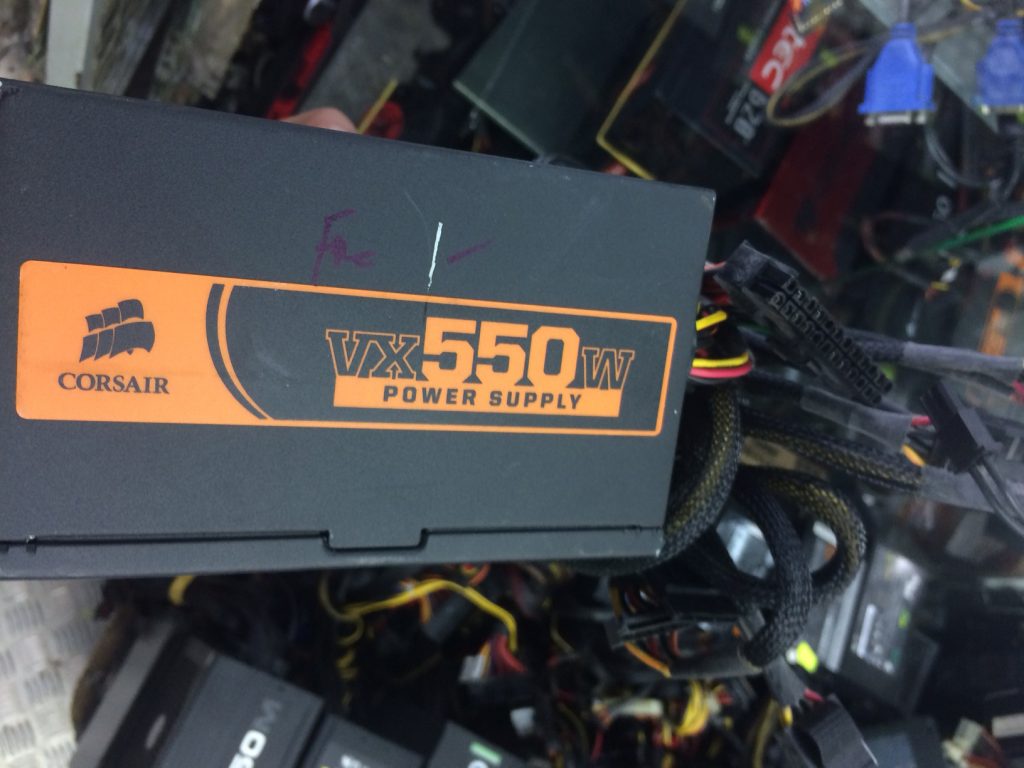
If you want a rig with 6 graphics cards, it is quite a bit cheaper for you to get 3 separate PSU of 550W then one of 1200W; the only problem you will face is that you will need 2 extras plug sockets.
If you plug in the PSU without plugging the main chords into the motherboard you will not be able to draw power; there is a small hack that you must apply (with a paperclip) to be able to get the PSU to work. You have to trick it to make it think that the motherboard is connected. You bend the paperclip into a U shape and then stick one end into the “green” wired hole and then the other one into any of the black wired holes. This may not work for all PSUs and please be careful; if anything happens, I disclaim all responsibility…
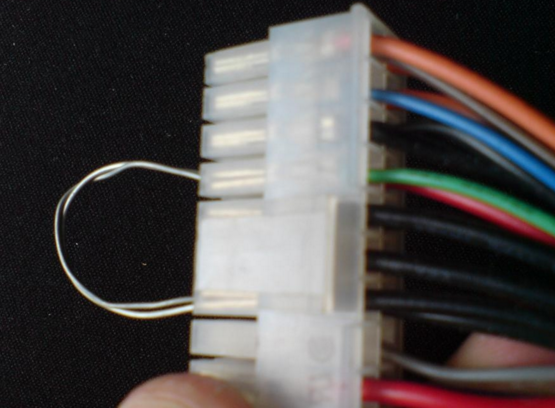
Afterwards, when I got it to work, I wrapped the thing in gaffa tape just to be on the safe side.
So, lets get back to the risers to see how we can hook them up; the risers usually come with a cable that looks like a standard USB cable but it’s actually slightly different I’m told. There is also a x1 PCIe end that comes with the pack that you buy (hopefully) and you should be able to stick the x1 PCI end into the slot like this thus and attach the USB cable to it:-
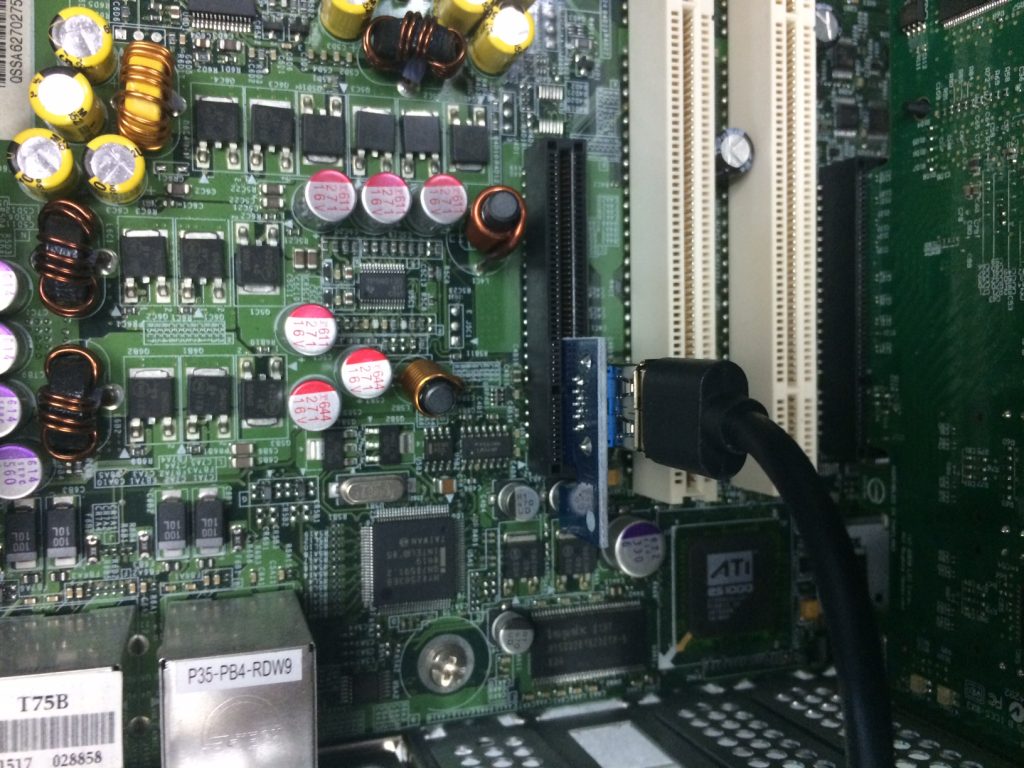
At the other end of the cable you plug it into the riser and then attach your graphics to the riser like this:-
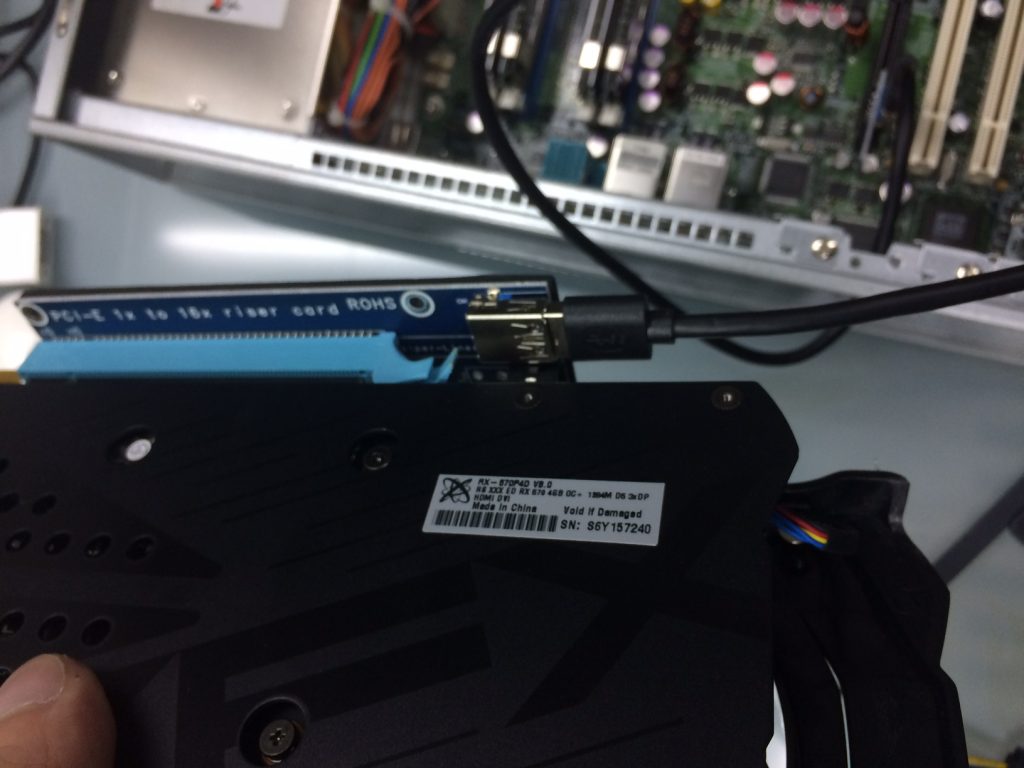
I bought myself a Radeon RX570 (4Gb) GPU which is an entry-level card just to test out this whole mining mumbo jumbo…. I would suggest that if you are serious about mining Ethereum, get an 8Gb card because once the DAG length is larger than 4Gbs then you will not be able to mine with the card and this could be in less than 1 year and a bit. You can do a google or Duckduckgo search for “DAG and Ethereum mining” to find out more about this.
After everything is hooked up, mine looked like this:-
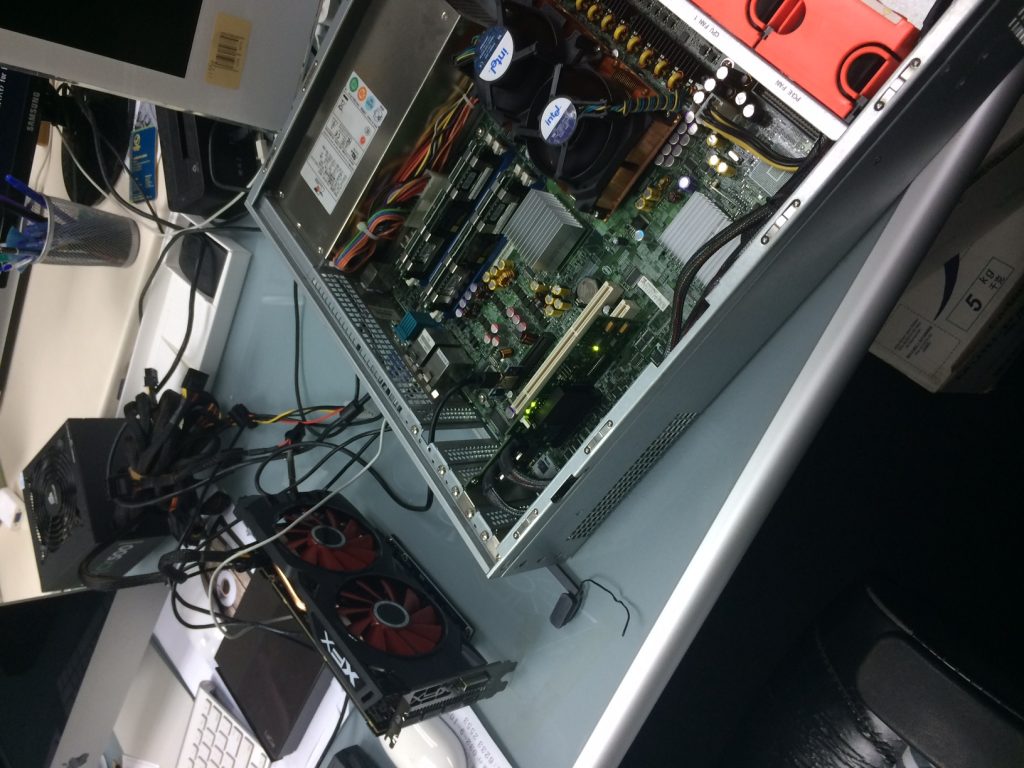
Actually, I didn’t use the DELL T710 at the end, I decided to use even older hardware as you can see from the picture – it’s an old rack mount server from yesteryears…. there are even non PCIe sockets on the motherboard for nostalgic value.
To be honest, they say that you need an SSD Harddrive for better mining; I think this is true if you want to solo mine because you would need to sync all of the blocks but if you mine through a pool then probably any Harddrive will do. I did end up getting a cheap 120Gb SSD and found that it ran out of space when trying to do the geth synchronisation so if you want to mine solo then maybe get a larger Harddrive like 300Gb – the block chain is getting bigger every day. However, if you are really serious about mining solo; you could setup a separate server/computer/terminal for syncing the blocks and then separate servers for mining then you wouldn’t have to encumber your mining rigs with block sync as well. If the above sounded like complete gobbledegook – it’s ok. “geth” is the software that allows you to become an Ethereum node and to be a node you need to download all of the blocks from the Ethereum Blockchain from other nodes.
There is quite a lot of information about whether to mine solo or pool; the simple rule I have is if you only have a few graphics cards (GPU) or less then mine through a pool; if you have more than 30-40 cards then mine solo. As I am only testing with one card I will mine through a pool.
Before we can even get setup within pool or solo mining, we must have an operating system for this test rig that we have setup. I think both UBuntu and Windows can work for mining and once the operating system is in place you have to instal “ethminer” which can be downloaded here:- https://github.com/ethereum-mining/ethminer/releases for pool mining. I’m a linux hack so naturally I decided to setup the mining system on linux; the flavour I used was Ubuntu (16.04) which worked quite well…. I also tried on Windows 7 but had issues when I added more than one graphics card; I tried to fix the issue a few times but couldn’t so went back to Ubuntu. However, if you want to overclock your cards (you’ll have to make your own enquiries on this) then you will have to do it on a Windows platform with ATIflash and Polaris or something. What I did was do the BIOS Flash in Windows and then the mining in Ubuntu; if you do go down this route remember to backup your BIOS. The overclocking is a two step process (i) Flashing the BIOS on the Graphics Card(s) and (ii) setting the memory, GPU speeds in the software; both parts need to be done for the overclocking to work. If you overclock without having flashed the BIOS you could damage the cards.
Installing Ubuntu and Setup with Radeon Graphics Card support
This part assumes that you are familiar with Linux and working with things through the command line; after Ubuntu has been installed you will have to install the graphics card drivers. Mine is a Radeon and the drivers could be downloaded online from https://support.amd.com/en-us/kb-articles/Pages/AMD-Radeon-RX-500-Series-Drivers.aspx.
(…to be continued)

